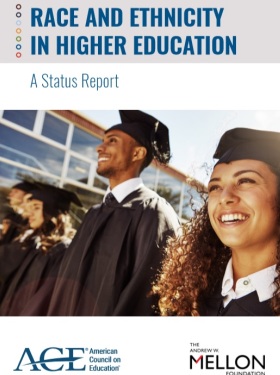A new report titled “Race and Ethnicity in Higher Education” offers a comprehensive review of the educational pathways taken by college students today and the educators who teach them.
Published by the American Council on Education and made possible by the support of The Andrew W. Mellon Foundation, the report provides data-informed groundwork for individuals who strive to close continuing gaps in equity in the education pipeline.
The report says it’s crucial for “educators, policymakers, community leaders, members of the media, and others to have access to timely data on one of the most salient predictors of higher education access and success in this country: race and ethnicity.”
Co-authors Lorelle L. Espinosa, Jonathan M. Turk, Morgan Taylor, and Hollie M. Chessman point out in the piece that the racial and ethnic makeup in the U.S. has changed drastically since the country’s founding and even during the last twenty years. In the not-too-distant-future, for example, more than 50 percent of students from communities of color—those currently attending K-12 schools—will make up the majority of the U.S. population.
Though such racial and ethnic diversity offers many benefits at all levels of education and in the workforce, according to the authors, the entire U.S. population must have equitable access to sources of opportunity, which encompasses higher education.
“Race and Ethnicity in Higher Education” covers the individuals who get access to varied educational environments and how such trajectories and their outcomes differ by race and ethnicity. Those in the higher-education community and accompanying stakeholders can use the report to gain insights, develop fresh inquiries, and make the case as to why race matters in U.S. education.
Key Points Drawn from the Report
- During the last 20 years, the U.S. population has grown more educated and more racially and ethnically diverse due in large part to a growing Hispanic population that is seeking increased higher education.
- Too many black students are faring poorly in the postsecondary education system in the U.S.
- There is a lack of accurate national data on numerous educational outcomes for American Indians and other populations—and what the information shows is concerning.
- Vast differences exist by race, ethnicity, and gender in terms of where students attend college and what they study, which indicates an uneven playing field in the labor market and a threat for intergenerational upward mobility.
- How students pay for higher education differs greatly by race and ethnicity, especially in terms of who borrows money and who leaves college with high levels of student-loan debt.
- The racial and ethnic diversity among college faculty, staff, and administrators doesn’t reflect that of today’s college students.
